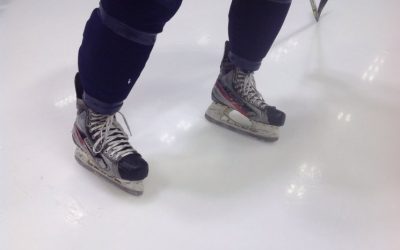Unilateral vs. bilateral training for field hockey players
Generally speaking, field hockey players train mainly for strength and power, two important components of athletic development [1, 2] The skate stroke is a complex action requiring the work of several muscles and joints in a range of movements at different moments of the stroke. The field hockey player’s push is performed with one leg, while the other acts in support, which is considered a unilateral/asymmetrical movement [3]. Therefore, it is often questioned in the training world whether the use of unilateral exercise would be more beneficial for field hockey players approaching the specific movement of the push. A unilateral exercise is when the body works asymmetrically (e.g. lunge), whereas a bilateral exercise engages both sides of the body in a similar way (e.g. squat) [4]. This questioning is often based on the bilateral force deficit theory. This theory states that the force generated bilaterally is weaker than the sum of the forces produced by unilateral movement [5, 6]. To form an opinion and prescribe what’s best for the athletes concerned, it’s important to understand the differences and benefits of the two types of exercise.
To begin with, it is important to note that a bilateral deficit is dependent on several factors, such as the type of movement performed, velocity, joint angle and intensity [5, 6]. However, it has been shown that, in most athletes, this deficit is absent or sometimes even reversed. Deficit reversal, also known as bilateral facilitation, occurs when the force produced during an action involving both sides of the body is greater than the sum of the forces produced when the movement is performed unilaterally [6].
Secondly, it has been shown that both types of training produce the same benefits in terms of increased strength [4]. However, unilateral training would have immediate effects, whereas bilateral training would present longer-term benefits, and these would be more durable [4, 6]. If so, what are the advantages of using unilateral exercises? Using unilateral exercises can activate a muscle using a lighter load than bilateral exercises, reducing stress on joints and the risk of injury. Also, these exercises can be more hockey-specific, working the muscle or muscle chain at the angles and range of motion required by the sport [1]. On the other hand, bilateral exercises allow you to use heavy loads and produce more power per action, which is important for stimulating type II muscle fibres [5]. Also, these exercises call for greater muscle mass, which increases hormonal response [1], an important aspect for the body to react positively and adapt to training [5].
In conclusion, working with unilateral and bilateral exercises is different. With this in mind, the field hockey player or his physical trainer should include both types of exercise in their program, in order to reap the benefits of each. Exercise selection should therefore be based on the progression established through the various phases of annual training planning.
Written by Patrick Delisle-Houde, CSCS, Master’s candidate in exercise physiology
To find out more about Patrick, you can follow his Facebook page or his website.
References :
1. Juan, C.S., Single-Leg Training for 2-Legged Sports: Efficacy of Strength Development in Athletic Performance. Strength & Conditioning Journal, 2001. 23(3): p. 35.
2. Montgomery, D.L., Physiology of ice hockey. Sports Med, 1988. 5(2): p. 99-126.
3. Pearsall, D., R. Turcotte, and S. Murphy, Biomechanics of ice hockey. Exercise and sport science, 2000. 1: p. 675-692.
4. Nijem, R.M. and A.J. Galpin, Unilateral Versus Bilateral Exercise and the Role of the Bilateral Force Deficit. Strength & Conditioning Journal, 2014. 36(5): p. 113-118.
5. Baechle, T.R. and R.W. Earle, Essentials of strength training and conditioning. 2008: Human kinetics.
6. Speirs, D.E., et al, Unilateral vs Bilateral Squat training for Strength, Sprints and Agility in Academy Rugby Players. Journal of strength and conditioning research/National Strength & Conditioning Association, 2015.
Want to stay on top of new articles before they’re published?
Subscribe to our newsletter.
Other articles of interest to you
Why is it easier to turn left?
Why is it easier to turn left? MAXIME Sports physiotherapist In a field hockey match, various skating techniques are used to counter the opponent. A technique of choice for quickly changing direction while maintaining good speed is the sharp turn. On the one hand,...

